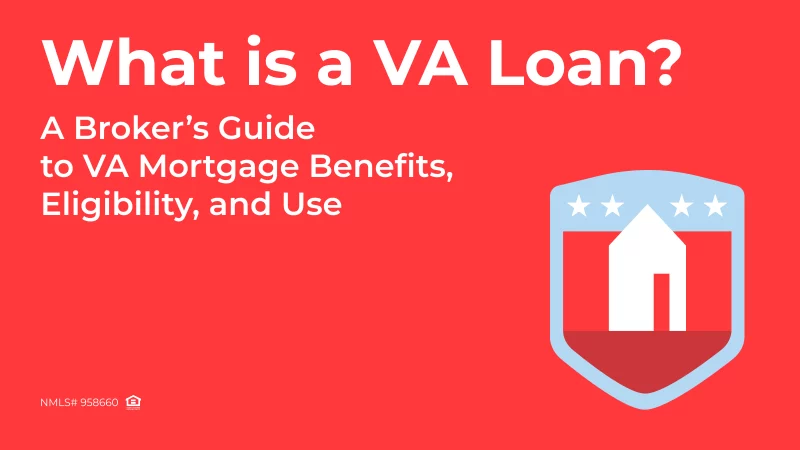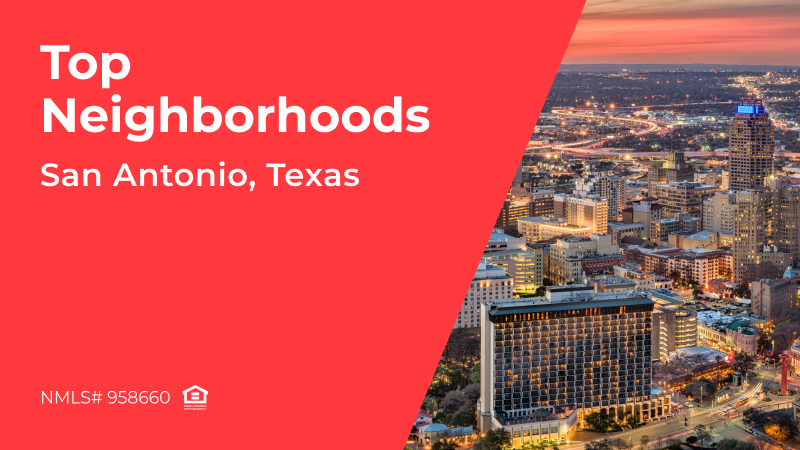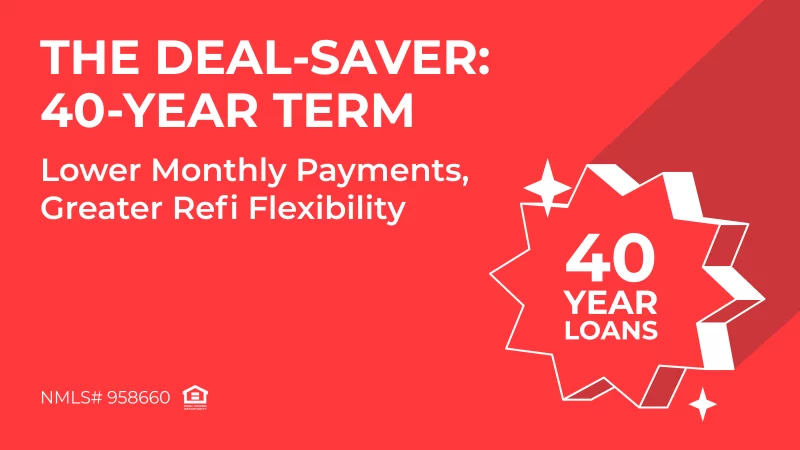
In today’s competitive and rate-sensitive mortgage environment, brokers need every tool available to serve clients effectively and grow their pipeline. One of the most powerful and often underutilized options is the VA loan, a government-backed mortgage program created specifically for veterans, active-duty service members, and certain eligible spouses.
VA loans offer unmatched advantages: no down payment, no private mortgage insurance (PMI), competitive rates, and flexible underwriting. For brokers, understanding how these loans work and how to guide clients through them is essential. Whether you’re working with a first-time buyer or a veteran looking to refinance, this guide will walk you through the key benefits, eligibility requirements, and step-by-step process of successfully originating VA loans.
VA Loans Explained: What They Are and How They Work
A VA loan is a mortgage program provided by the U.S. Department of Veterans Affairs and issued by a private lender. As this loan doesn’t require a down payment, it can make buying a home much easier.
It was designed to make homeownership more accessible for veterans, active-duty service members, and eligible surviving spouses. Additionally, it offers several exceptional advantages that aren’t available with Conventional or FHA loans.
The VA’s Role in Guaranteeing Loans
The U.S. Department of Veterans Affairs (VA) plays a critical behind-the-scenes role in the VA loan process by guaranteeing a portion of each loan made through private mortgage lenders. This guarantee doesn’t mean the VA lends money directly. Instead, it ensures that lenders are partially protected if the borrower defaults.
As a result, lenders are able to offer more favorable terms, including no down payment requirements, no private mortgage insurance (PMI), and competitive interest rates, even to borrowers with limited credit or savings. This government-backed structure is what makes VA loans one of the most accessible and flexible mortgage options on the market.
How VA Loans Differ from Standard Mortgages
| Feature | VA Loans | Standard (Conventional) Mortgages |
| Down Payment | $0 required in most cases | Typically, 3%–20% required |
| Private Mortgage Insurance (PMI) | Not required, regardless of down payment | Required if down payment is less than 20% |
| Credit Requirements | More flexible; can qualify with lower scores | Stricter; higher credit score typically needed |
| Closing Costs | Capped and partially restricted by VA guidelines | Not capped; vary by lender and location |
| Loan Limits | No official VA limit (subject to lender limits) | Conforming loan limits usually apply |
| Loan Guarantee | Backed by the U.S. Department of Veterans Affairs | Not guaranteed by a government agency |
Core Benefits for Borrowers: 2025 Updates
In 2025, VA loans are still the most accessible and cost-effective mortgage options available. Here are the key benefits:
- $0 down payment. No need to save for a large upfront cost.
- No private mortgage insurance (PMI). This saves borrowers hundreds of dollars each month.
- Competitive interest rates. They are often lower than conventional loans.
- Flexible credit requirements. It is easier to qualify even with moderate credit.
- Limited closing costs. There’re caps on what lenders and sellers can charge.
- Streamlined refinancing options. For instance, Interest Rate Reduction Refinance Loan (IRRRL).
- Funding fee exemptions. They’re available for veterans with service-connected disabilities.
- Reuse of benefits. Eligible borrowers can use their VA claim more than once.
These advantages make VA loans a cost-effective, flexible choice for eligible veterans, service members, and their families.
Who Qualifies for a VA Loan?
VA loans were created for those who have served our country and for certain family members. To qualify, borrowers must meet service requirements set by the U.S. Department of Veterans Affairs and have a Certificate of Eligibility (COE) to confirm their entitlement.
Eligible borrowers include:
- Active-duty service members who have served for a minimum period. Typically, 90 continuous days
- Veterans with an honorable discharge who meet length-of-service standards
- National Guard and Reserve members with at least six years of service, or 90 days active service under Title 10 orders
- Surviving spouses of service members who died in the line of duty or from service-connected causes.
Another unique feature of the VA loan program is that it allows borrowers to reuse their benefits and, in many cases, restore the claim after a prior VA loan is paid off or the property is sold. This makes the program a long-term financing solution for eligible individuals and their families.
Military Service Requirements & COE
As mentioned previously, to qualify for a VA loan, a borrower must meet particular military service requirements and receive a Certificate of Eligibility (COE) from the U.S. Department of Veterans Affairs.
The COE verifies the borrower’s eligibility based on service history, duty status, and discharge type. Usually, active-duty service members qualify after 90 continuous days of service. Veterans must meet minimum active-duty requirements, which vary depending on the period served. National Guard and Reserve members may also be eligible if they have completed at least six years of service or have served 90 days of active duty during wartime.
The COE is an essential step that can be done through a lender, the VA portal, or by mail.
VA Loan Eligibility for Spouses and Reservists
In addition, certain spouses and Reservists may also qualify for a VA loan. Surviving spouses of service members who died in the line of duty or from a service-connected cause are often eligible, provided they have not remarried.
Reservists and National Guard members are qualified if they’ve completed at least six years of honorable service, were called to active duty for at least 90 days, or were discharged due to a service-related disability.
Using VA Loans More Than Once
Many borrowers are sure they can only use a VA loan once. That’s a myth. The VA loan benefit is reusable, as long as the borrower has available entitlement. If a VA loan has been paid off or the home was sold, the borrower can fully restore it. Even if a borrower has an existing VA loan, partial entitlement may allow for another VA-backed purchase.
There are specific rules and calculations involved, especially for second time use or multiple VA loans at once, so working with an experienced lender or broker is key.
How Brokers Guide Clients Through the VA Loan Process
It’s no exaggeration to say that mortgage brokers play a crucial role in helping veterans and service members navigate the VA loan journey: from verifying eligibility to the closing stage. A smooth and informed process might ensure client satisfaction and strengthen long-term relationships and referrals.
Step-by-step guidelines for your clients
1. Confirm Eligibility
The first step is helping the borrower receive their Certificate of Eligibility (COE) from the Department of Veterans Affairs. This document proves that the borrower meets the VA’s military service requirements.
2. Preapproval
Once eligibility is confirmed, brokers assist in gathering financial documentation such as income, credit history, and assets to secure a preapproval letter.
3. Finding a VA-Approved Property
VA loans require the property to meet Minimum Property Requirements (MPRs) and be the borrower’s primary residence. Brokers should help clients work with real estate agents familiar with VA guidelines to identify homes that are eligible for VA financing.
4. Appraisal and Underwriting
After a home is under contract, the lender will order a VA appraisal to confirm the property’s value and ensure it meets VA safety standards. Simultaneously, the loan goes into underwriting, where the borrower’s financials are reviewed in detail.
5. Closing Timeline and Post-Close Options
VA loans typically close within 30–45 days. At closing, you ensure the borrower understands all documents and fees, including the VA funding fee, if applicable. After the loan funds, you might also tell your clients about refinance opportunities, such as the VA Interest Rate Reduction Refinance Loan (IRRRL), and how to reuse their entitlement in the future.
Remember, your guidance is crucial for your VA borrowers. Thanks to your valuable help, they can experience a streamlined way to desirable homeownership.
Case Study: How a Broker Helped a Veteran Buy a Second Home with No Down Payment
Situation:
A veteran, John, had previously used his VA loan entitlement to purchase a home in another state. Then he decided to relocate for work purposes and wanted to buy a new home using his VA benefits again. Yet a part of his entitlement was tied up in the previous property, which he had not yet sold.
Challenge:
With only partial entitlement, John wasn’t sure if he could qualify for another VA loan without making a large down payment. He was told that he might need to wait or pay off the previous loan.
How the Broker Helped:
A broker specializing in VA loans reviewed John’s remaining entitlement and found out he still qualified for a second-tier VA loan.
The broker:
- Calculated John’s remaining entitlement using VA guidelines.
- Found a property that fit within the loan limits for the county, so no down payment was needed.
- Worked with a VA-approved lender that accepted partial entitlement scenario.
- Started the loan process, guiding John through the Certificate of Eligibility (COE) update and underwriting requirements.
Result:
John bought a new home with no down payment, using his remaining VA entitlement. All without the necessity to sell his previous property.
VA vs Conventional vs FHA: A Quick Comparison
| Feature | VA Loan | Conventional Loan | FHA Loan |
| Down Payment | 0% (for qualified borrowers) | Typically, 3–20% | Minimum 3.5% (with 580+ credit) |
| Mortgage Insurance | No PMI (But has a funding fee) | Required if <20% down (PMI) | Required (MIP: upfront + monthly) |
| Credit Score Minimums | Flexible; often 580–620+ | Typically, 620+ | Minimum 500 (with 10% down)
580+ (for 3.5% down) |
| Funding Fee or Upfront Costs | VA Funding Fee (waived in some cases) | None, but closing costs apply | 1.75% Upfront MIP (can be rolled in) |
| Limits & Flexibility | No loan limits with full entitlement; Only for eligible veterans/service members | Loan limits apply (based on area and lender); flexible use | Loan limits apply; less flexible than conventional |
| Reuse Options | Yes, can reuse VA benefit multiple times | Not applicable | Not applicable |
What is the VA Funding Fee?
The VA funding fee is a one-time payment that most VA loan borrowers are required to pay. It helps compensate for the cost of the VA loan program to taxpayers and remains available for future generations of veterans.
The fee varies based on the following factors:
- down payment amount
- loan type
- whether the borrower has used a VA loan before
When the VA Funding Fee is Charged and Why
The funding fee is usually charged at the closing stage, but it can be included in the loan amount. It is not a monthly mortgage insurance fee, but a separate charge to fund the VA loan guarantee program. The funding fee supports the long-term availability of VA lending.
2025 Funding Fee Chart
| Loan Type & Usage | Down Payment | Funding Fee |
| First-time use | 0% | 2.15% |
| First-time use | 5–9.99% | 1.5% |
| First-time use | 10% or more | 1.25% |
| Subsequent use | 0% | 3.3% |
| Subsequent use | 5–9.99% | 1.5% |
| Subsequent use | 10% or more | 1.25% |
| IRRRL (Streamline Refinance) | Any | 0.5% |
Note: These rates are current for loans closing in 2025.
Exemptions
Borrowers may be exempt from the funding fee if they meet one of the following:
- Have a VA disability compensation
- Eligible for compensation but receiving military retirement pay instead
- Surviving spouses of veterans who died in service or from service-connected disabilities
- Purple Heart recipients, active-duty only, if buying a home
Common Misconceptions About VA Loans
- A Borrower Can Only Use It Once.
Not true. A borrower can use a VA loan multiple times, if they meet entitlement requirements. - A Borrower Must Pay PMI.
Incorrect. VA loans do not require private mortgage insurance, even with 0% down. - VA Loans Take Longer to Close.
Not necessarily. With a knowledgeable broker and lender, VA loans can close in similar timeframes as conventional loans, and sometimes even faster. - Brokers Can’t Help with VA Loans.
Wrong. Brokers often work with VA-approved lenders and can help navigate the process, find better rates, and assist with paperwork like the COE.
FAQs
What is a VA loan?
A VA loan is a mortgage backed by the U.S. Department of Veterans Affairs, created to help eligible veterans, active-duty service members, and certain surviving spouses buy, build, or refinance a home with beneficial terms.
Do VA loans require a down payment?
No. In most cases, VA loans allow eligible borrowers to purchase a home with $0 down, making homeownership more accessible.
Who qualifies for a VA loan?
VA loan eligibility is based on military service. Generally, veterans, active-duty personnel, National Guard and Reserve members, and certain surviving spouses may qualify if they meet the VA’s service and discharge requirements and obtain a Certificate of Eligibility (COE).
Can you use a VA loan twice?
Yes. VA loans are reusable. It means qualified borrowers can use their privilege more than once, as long as they have available entitlement or restore it after a prior VA loan is paid off or the property is sold.
What’s the VA funding fee in 2025?
As of 2025, the VA funding fee typically ranges from 1.25% to 3.3% of the loan amount, depending on the type of loan, down payment, and whether it’s a first or subsequent use. Some borrowers may be exempt from the fee.
Are VA loans harder to close?
No. VA loans generally close in the same timeframe as conventional loans when handled by experienced lenders. With proper documentation and knowledgeable brokers, the process is pretty quick.
Key Takeaways
- No Down Payment Required. VA loans allow eligible borrowers to finance 100% of a home’s value, a major selling point for clients with limited savings.
- No PMI = Lower Monthly Payments. Unlike conventional loans, VA loans do not require private mortgage insurance, making them more affordable over time.
- Flexible Credit & DTI Standards. VA loans offer more lenient credit score and debt-to-income (DTI) requirements, broadening the pool of qualified buyers.
- VA Appraisal & Property Standards. As a broker, you should educate clients about the VA appraisal process, which includes both a valuation and minimum property condition checks.
- COE & Military Eligibility are Critical First Steps. Helping clients obtain their Certificate of Eligibility (COE) early prevents delays and sets realistic expectations.
Conclusion
The VA loan is one of the most convenient home financing tools available to eligible veterans, active-duty service members, and their families. With no down payment, no private mortgage insurance, and competitive interest rates, it makes homeownership a reality.
A mortgage broker plays a crucial role in guiding borrowers through the VA loan process, helping them receive their Certificate of Eligibility (COE), connecting them with VA-approved lenders, and ensuring they understand key steps like the VA appraisal and funding fee.



